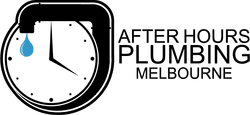After many years as a licensed plumber across Melbourne’s western suburbs, I’ve seen the aftermath of DIY bidet installations gone wrong. Water contamination, flooded bathrooms, and hefty bills from insurance companies refusing to cover unlicensed work. The Victorian Building Authority hasn’t issued health warnings about this stuff for nothing.
Why DIY bidet installation creates serious health risks
The main problem with DIY bidet installations isn’t what you can see - it’s what happens inside your plumbing when things go wrong. Most people focus on getting water to spray where they want it, completely missing the critical safety systems that prevent sewage from flowing backward into your drinking water.
Backflow is more common than you think
Here’s something to think about. Someone drops their handheld bidet spray into the toilet bowl. Seems harmless enough, right? Wrong. Without proper backflow prevention, that contaminated spray head can actually suck sewage back into your water supply a scenario when the pressure drops.
Water pressure fluctuations happen constantly - when your neighbour waters their garden, when the council flushes hydrants, during peak usage times. Every pressure drop creates suction that can pull contaminated water backward through improperly installed systems.
Water samples from DIY bidet installations have shown faecal bacteria in kitchen taps. That’s not a typo. Sewage contamination doesn’t stay confined to your bathroom when your plumbing lacks proper safeguards.
The health consequences are real
Sewage contamination introduces E. coli, norovirus, and hepatitis A into drinking water. These aren’t just “upset stomach” bugs - they can put vulnerable family members in hospital. Kids, elderly relatives, anyone with compromised immunity faces serious risks from waterborne pathogens.
Families deal with recurring gastroenteritis for months before discovering their DIY bidet installation is contaminating their water supply.
What makes this worse is that contamination often goes undetected initially. You might drink contaminated water for weeks before symptoms appear or someone tests the supply.
Your DIY installation affects the whole street
This is the part that really gets me - DIY bidet installations can contaminate neighbouring properties. During water main work or pressure drops, contaminated water from your place can flow into shared distribution pipes, affecting multiple households.
Entire apartment blocks can lose water supply because one unit’s DIY installation contaminated the shared system. The cleanup costs, temporary accommodation, and health testing for affected residents can run into tens of thousands of dollars.
The Victorian Building Authority treats this as a community health issue because that’s exactly what it is. One poorly installed bidet can create widespread contamination requiring emergency response from water authorities.
What Victorian regulations actually require
The VBA is crystal clear about this - bidets, douche sprays, and handheld hoses can only be installed by licensed Water Supply plumbers. Not just any plumber either - you need specific Water Supply licensing that covers backflow prevention and cross-connection control.
Why licensing matters
Water Supply licensing requires training in contamination prevention, pressure dynamics, and Australian plumbing standards. We learn how to assess contamination risks, select appropriate backflow devices, and test installations for ongoing protection.
DIY installations violate Section 221D of the Building Act 1993. The penalties aren’t trivial - property owners can face prosecution and substantial fines for unlicensed plumbing work. More importantly, insurance policies typically exclude coverage for damage from unauthorised installations.
The technical requirements you can’t skip
Every bidet installation adjacent to a toilet requires high-hazard backflow prevention devices. These aren’t simple one-way valves from the hardware store - they’re sophisticated systems with testable protection levels designed for high-contamination-risk applications.
All products must carry WaterMark certification proving they meet Australian safety standards. Those cheap online bidet attachments usually lack proper certification, making them illegal to install regardless of who does the work.
Installation must follow manufacturer specifications, AS/NZS 3500.1 plumbing standards, and Victorian regulations simultaneously. Getting all three requirements right takes training and experience most DIY enthusiasts simply don’t have.
Understanding professional backflow prevention
High-hazard backflow prevention devices use multiple protection mechanisms including air gaps, check valves, and pressure differential systems. Proper device selection depends on your specific water pressure, contamination risk level, and installation location.
Why generic hardware store solutions fail
Those “universal” bidet attachments you see advertised online generally connect directly to toilet isolation valves without any backflow protection. This creates an open pathway for contamination during pressure variations - exactly what regulations are designed to prevent.
Professional installations use testable backflow devices that can be verified annually to ensure ongoing protection. These devices cost more initially but provide measurable safety assurance rather than false security.
I test backflow prevention devices using calibrated equipment that measures protection levels under various pressure conditions. This testing confirms your installation provides actual protection rather than just appearing compliant.
Installation complexity most people underestimate
Backflow prevention devices require specific positioning, pressure settings, and commissioning procedures. Installation angle affects device function. Incorrect pressure settings can cause spray control problems or device failure.
The testing and commissioning process alone requires specialised gauges and certification procedures that cost more than most DIY enthusiasts want to invest for a single installation.
| Aspect | DIY Installation | Professional Installation |
|---|---|---|
| Backflow Prevention | No proper protection, contamination risk | High-hazard certified devices, tested protection |
| Legal Compliance | Violates Section 221D Building Act 1993 | Meets all VBA and AS/NZS 3500.1 standards |
| Product Certification | Often non-WaterMark certified products | WaterMark certified, Australian standards compliant |
| Insurance Coverage | Typically excluded from policies | Full warranty and insurance protection |
| Health Risk | E. coli, norovirus contamination possible | Eliminates cross-contamination risks |
| Community Impact | Can contaminate neighbouring properties | Protects entire water distribution system |
| Documentation | No compliance records | Complete testing and certification records |
| Emergency Support | No professional backup available | 24/7 emergency response and expertise |
| Testing & Commissioning | No professional verification | Calibrated equipment testing and certification |
| Penalty Risk | Fines and forced removal possible | Full regulatory compliance guaranteed |
Common DIY mistakes
The most dangerous mistake involves connecting spray hoses directly to toilet cistern feeds without any backflow protection. This creates a direct contamination pathway that bypasses every safety system in your plumbing.
Pressure problems and material failures
DIY installations often use inappropriate hoses or fittings that fail under normal water pressure. I’ve responded to flooding from burst cheap hoses, failed connections, and pressure-related failures that could have been prevented with proper materials.
Many people don’t realise that toilet areas experience pressure surges during flushing that can stress inadequate connections. Professional installations account for these pressure variations using appropriate materials and connection methods.
Compliance issues that cause ongoing problems
Non-WaterMark products create immediate compliance violations regardless of installation quality. Councils can require immediate removal of non-compliant installations, forcing expensive reinstallation with proper materials.
The documentation requirements for compliant installations include manufacturer certifications, installation testing records, and ongoing maintenance schedules. DIY installations rarely include proper documentation, creating problems during property sales or insurance claims.
Why professional installation provides better value
Professional bidet installation costs more upfront but eliminates the risks, compliance issues, and potential failure costs associated with DIY attempts. Consider that contamination cleanup alone can cost thousands of dollars, not including health consequences or property damage.
What professional installation includes
Licensed installation provides comprehensive site assessment, appropriate device selection, proper materials, testing and commissioning, compliance documentation, and ongoing maintenance scheduling. This systematic approach ensures reliable, safe operation.
We source WaterMark-certified products appropriate for your specific installation conditions. Quality materials and proper installation techniques minimise maintenance requirements while maximising operational reliability.
Emergency support when things go wrong
Professional installations include warranty protection and emergency support capabilities. When problems occur - and they sometimes do even with proper installation - licensed plumbers can respond immediately with appropriate expertise and equipment.
At After Hours Plumbing, we provide 24/7 emergency response across Melbourne’s western suburbs for both installation failures and urgent contamination issues. This emergency capability proves particularly valuable when immediate response prevents minor problems from becoming major disasters.
Real emergency situations from DIY installations
I’ve responded to emergency calls where DIY plumbing created immediate flooding during weekend periods when most plumbers aren’t available. These emergencies often require immediate water isolation plus emergency remediation to prevent property damage.
Contamination incidents require coordination with local water authorities for proper testing and system flushing procedures. Emergency response includes temporary isolation while arranging permanent professional replacement installation.
Insurance and liability considerations
Property damage from DIY plumbing work typically isn’t covered by standard insurance policies. When DIY installations affect neighbouring properties, liability exposure can create substantial financial consequences not covered by homeowner insurance.
Emergency remediation costs for contamination incidents can reach thousands of dollars, particularly when multiple properties require testing and temporary water supply arrangements.
Choosing professional installation services
Verify plumber licensing through the VBA practitioner directory before engaging anyone for bidet installation work. Current Water Supply licensing ensures they’re qualified for contamination prevention requirements.
What to expect from professional installation
Comprehensive installation quotes include all necessary backflow prevention devices, WaterMark-certified products, testing requirements, and compliance documentation. Professional quotes demonstrate understanding of regulatory requirements rather than just basic connection work.
Local experience matters for understanding water supply characteristics and council requirements specific to your area. Melbourne’s western suburbs have particular water pressure and distribution characteristics that affect installation approaches.
After Hours Plumbing combines local expertise with emergency availability, ensuring ongoing support throughout your installation’s operational life. We understand western Melbourne water systems and provide immediate response when problems occur.
Making the right decision for your family
DIY bidet installation creates genuine health risks extending beyond your household to affect neighbouring properties through water supply contamination. These risks aren’t theoretical - I’ve responded to real contamination incidents requiring emergency remediation and health authority involvement.
Professional installation ensures proper backflow prevention, regulatory compliance, and ongoing safety protection. Licensed plumbers provide essential expertise plus appropriate warranties and emergency support capabilities that DIY installations simply cannot match.
The cost difference between professional installation and DIY attempts shrinks dramatically when you factor in contamination risks, insurance exclusions, regulatory penalties, and potential emergency remediation expenses.
Get professional installation right the first time
Protect your family and community by choosing licensed professional bidet installation. The Victorian Building Authority’s regulations exist to prevent real health hazards that have caused actual contamination incidents across Melbourne.
Professional installation provides peace of mind knowing your upgrade enhances hygiene safety rather than creating dangerous health risks for your family and neighbours.
For expert bidet installation consultation or emergency plumbing response across Melbourne’s western suburbs, contact After Hours Plumbing. We provide licensed expertise, 24/7 availability, and proper installation ensuring your bidet upgrade meets all safety and regulatory requirements.
Don’t risk your family’s health with DIY shortcuts when professional solutions ensure safety, compliance, and ongoing reliability. Contact us for proper installation that protects your community while providing the hygiene benefits you’re looking for.












































